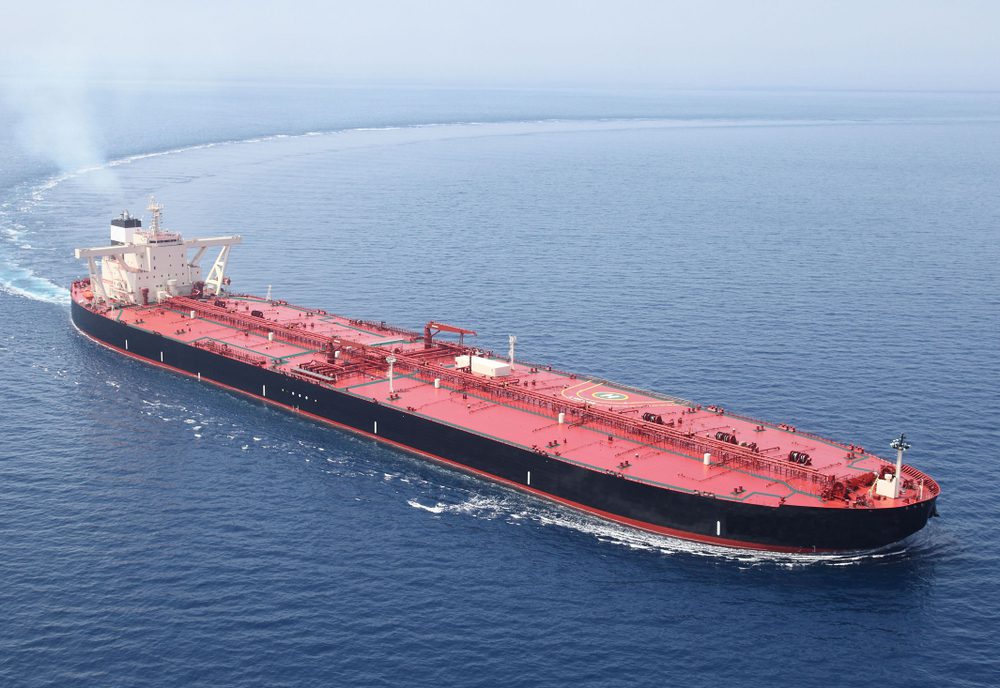Photo: Garry2014 / Shutterstock
By Alex Longley (Bloomberg) — Higher OPEC oil production and longer voyages are propelling shipowners back to good times.
Just a month ago, hiring a supertanker for the benchmark Middle East Gulf-to-China route cost about $18,000 a day. That almost tripled to $51,000 a day as of Monday, the highest level since at least early 2017. The surge has come as the ships that can haul 2 million barrels across the oceans are heavily utilized, with Chinese demand healthy and the Organization of Petroleum Exporting Countries and allies increasing output ahead of imminent curbs on Iranian exports.
As the Persian Gulf state’s output has plunged before the snapback of U.S. sanctions on Nov. 4, Saudi Arabia said last week that OPEC was in “produce as much as you can mode.” With the U.S. exporting bumper volumes to Asia, and surging flows heading to China from West Africa and Brazil, shipowners are reaping the rewards.
“A lot of people who had taken Iranian crude during the last set of sanctions are not taking it this time,” Paddy Rodgers, chief executive officer of Antwerp, Belgium-based tanker-owner Euronav NV told Bloomberg. “Demand has stayed resilient when a lot of people thought it was going to get weak. On top of that, we’ve seen ships stretched over longer distances.”
While output cuts by OPEC and allies that started at the beginning of last year were a fillip for oil bulls, they weighed heavily on shipowners as an oversupplied fleet of vessels competed for fewer cargoes. Now the market appears to be at a tipping point, Rodgers said, with producers ramping up again and shippers seeing “more miles and more congestion” helping to lift rates.
A standard supertanker journey from Iran to South Korea, for example, would take three weeks, while it would take about 40 days from Northwest Europe, and 8 weeks from the U.S. Gulf, if routed around the Cape of Good Hope.
Harnessing Prices
The spike in freight rates has been spurred by “sustained strong demand in both the Middle East and West Africa,” JPMorgan Chase & Co. analyst Noah Parquette wrote in a report this week. Morgan Stanley said that rates look as though they could grow even stronger with bookings for early November appearing higher month on month.
“The market appears to be turning a corner, fueled by seasonality, increased OPEC production, accelerated scrapping, Iran sanctions and rising ton-miles,” Bloomberg Intelligence analysts including Talon Custer wrote in a report.
Euronav on IMO 2020, scrubbers and hedging: The company is in discussions with four oil major refiners about providing compliant fuels ahead of the International Maritime Organization’s 2020 sulfur cap. Using exhaust cleaning systems, or scrubbers, to comply with the sulfur cap “feels wrong,” as the systems may still pollute the oceans. Company is considering a fuel-hedging program for 2019, as the breakdown in the link between fuel prices and freight means the company no longer has a natural hedge.
© 2018 Bloomberg L.P
Unlock Exclusive Insights Today!
Join the gCaptain Club for curated content, insider opinions, and vibrant community discussions.

 Join The Club
Join The Club













